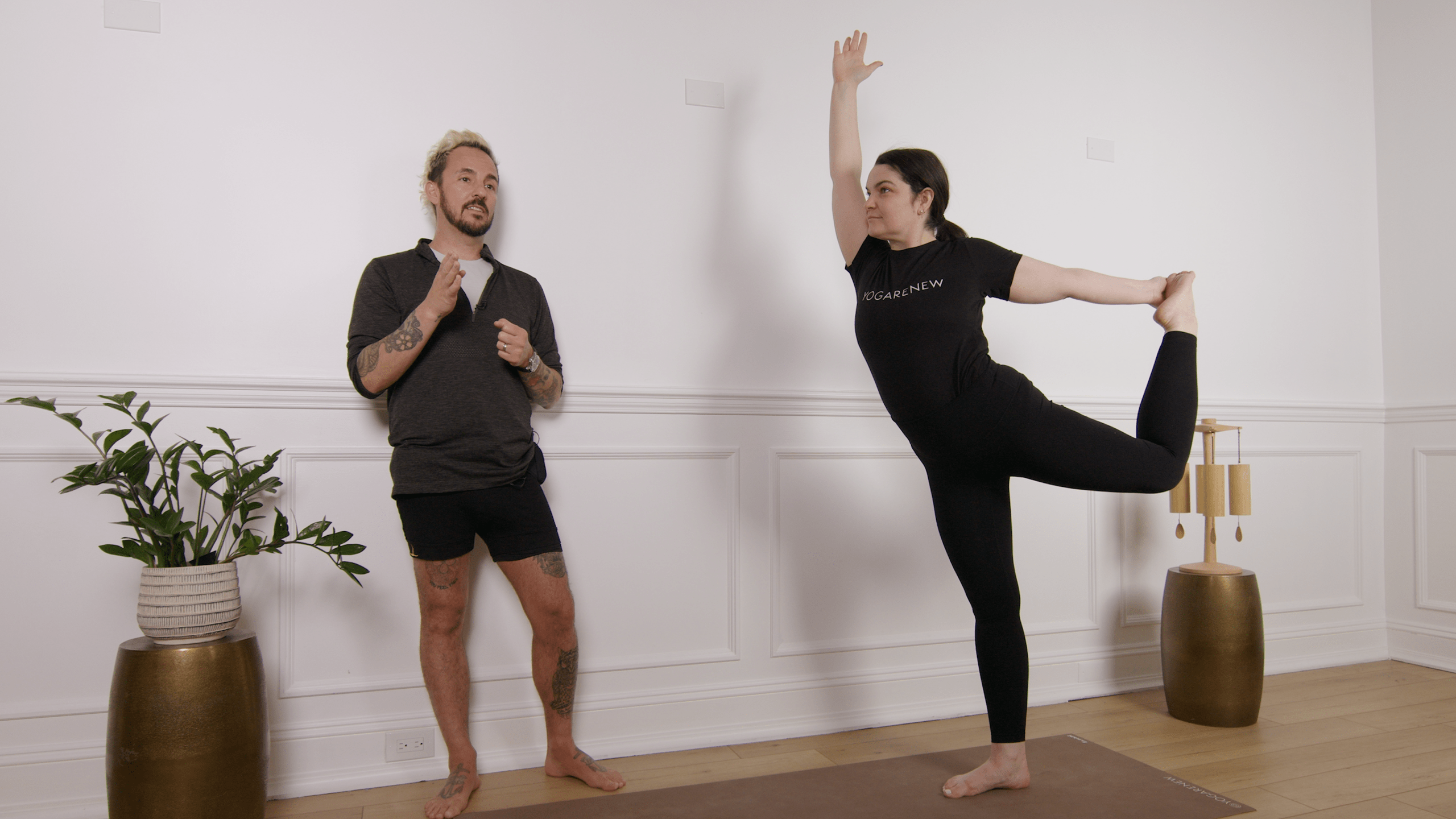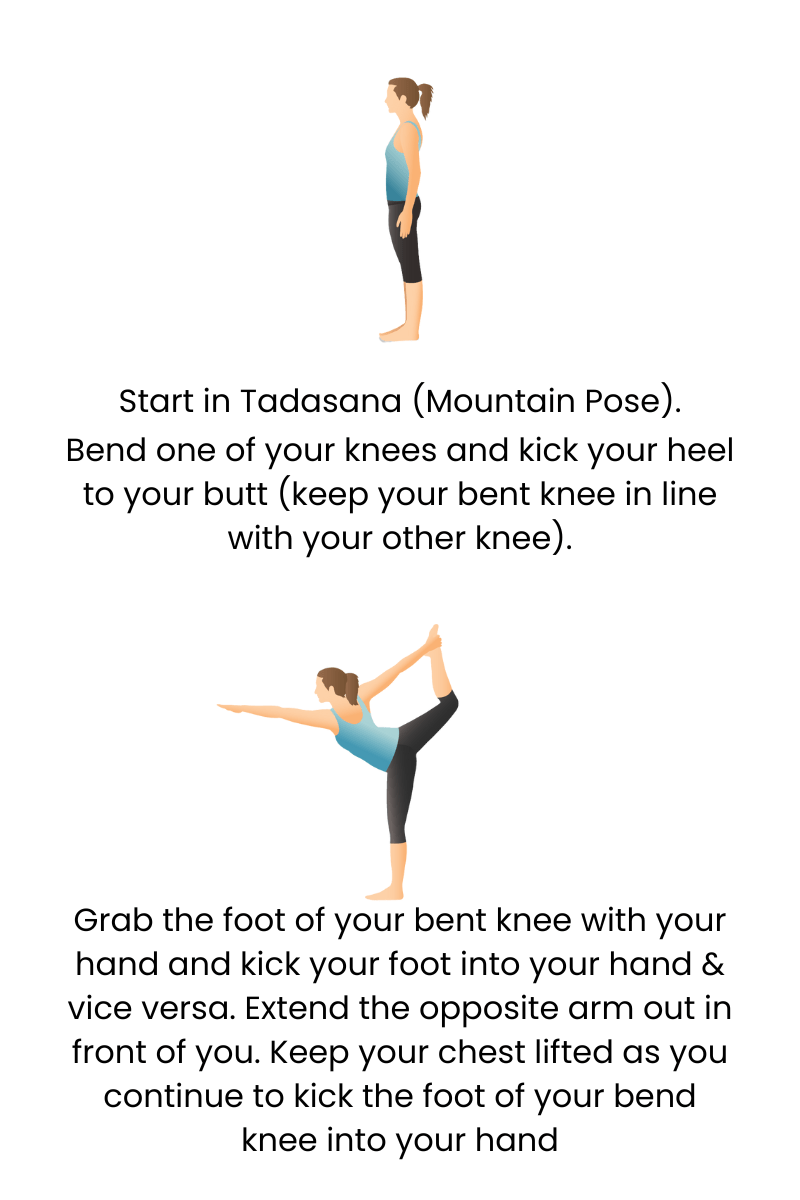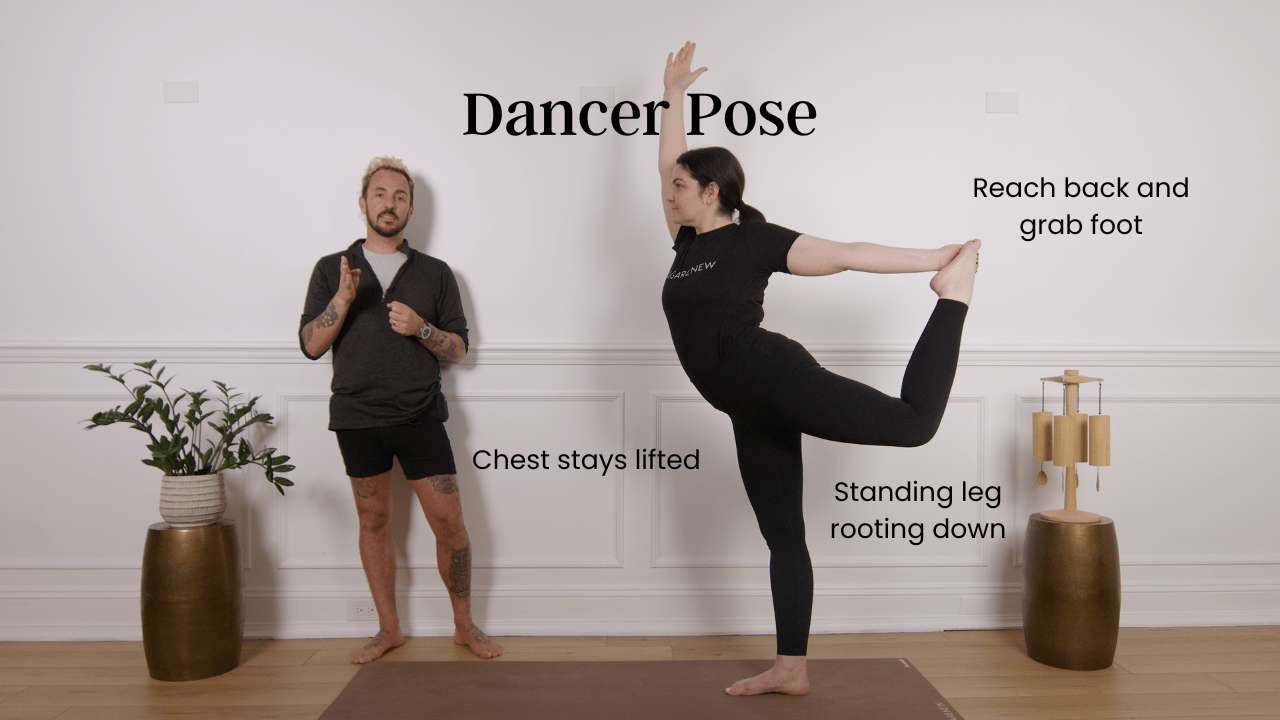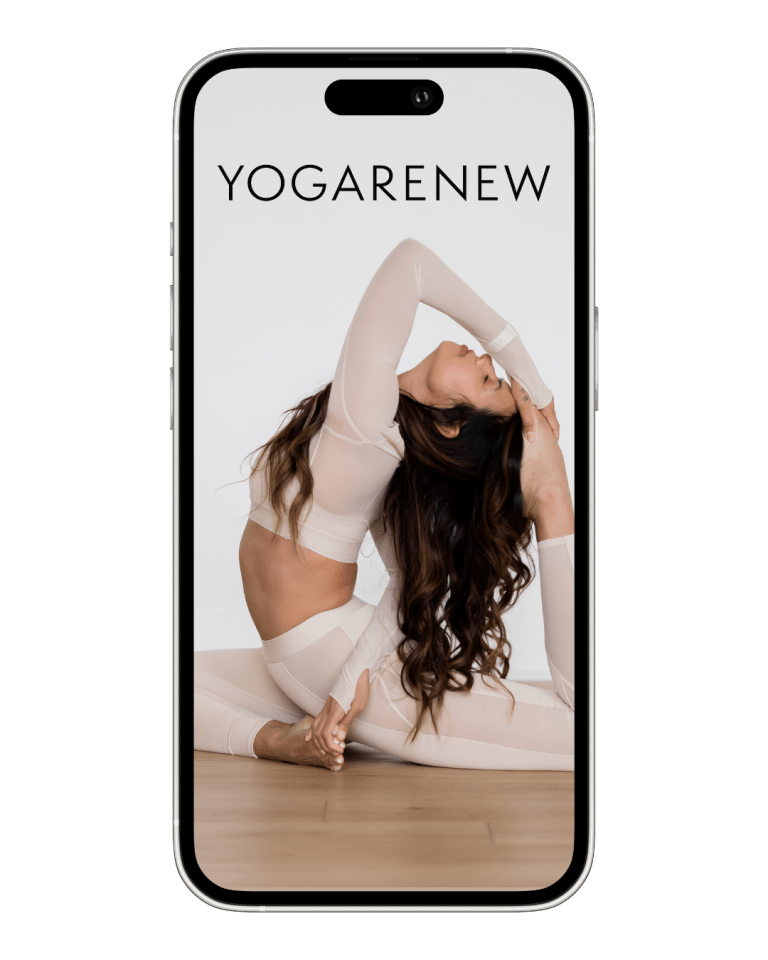What is Dancer Pose?
English Name: Dancer Pose
Sanskrit Name: Natarajasana (pronounced nut-ah-raj-AHS-uh-nuh)
Category: Standing, Balance, Backbend, Intermediate

English Name: Dancer Pose
Sanskrit Name: Natarajasana (pronounced nut-ah-raj-AHS-uh-nuh)
Category: Standing, Balance, Backbend, Intermediate
Dancer Pose, or Natarajasana, is a graceful standing backbend that combines strength, flexibility, and focus. Named after Nataraja, the dancing form of the Hindu god Shiva, this pose embodies balance in motion—requiring stability in the standing leg, openness in the heart, and steady concentration of the mind.
Often seen as a symbol of elegance and control, Dancer Pose stretches the front body while strengthening the legs and improving posture. It’s a favorite in Vinyasa and Hatha classes and often used as a peak pose for balancing and backbend sequences.


Dancer Pose brings together balance, strength, grace, and breath—making it a beautiful expression of focus and fluidity. It energizes the body, opens the front line, and invites you to embody effort and ease in equal measure.
Whether practiced as a peak pose or part of a creative sequence, Natarajasana challenges you to stay grounded while reaching upward, balancing strength with softness.
No! Flexibility will grow over time. Start where you are, and use props like straps or blocks.
That’s normal. Practice near a wall, keep your gaze steady, and stay patient with yourself.
Focus on pressing the foot into the hand and lifting from the chest. Over time, try the full variation.

Explore classes & pose tutorials for any style, format, duration or experience level with a free account in the YogaRenew app. Or subscribe and gain access to workshops, live classes and more.